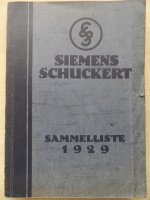Gauge #20 will be fine for the filament wiring, and also is plenty for HV if the insulation
is rated for at least 600V.
is rated for at least 600V.
Last edited:
Hi Ray and thank you!
That's great because I have plenty on hand...
I only began to wonder because the wiring from the secondary wiring from the transformer uses a notably heavier gauge for the 6.3V...
Thanks again!
Greg.
That's great because I have plenty on hand...
I only began to wonder because the wiring from the secondary wiring from the transformer uses a notably heavier gauge for the 6.3V...
Thanks again!
Greg.
Yes, a transformer's filament winding termination wires can be larger than necessary, but the
actual internal windings are always single core enamel magnet wire, sized just large enough.
Gauge #20 is rated for up to 11A as internal chassis wiring, so derate it down to say 5A.
actual internal windings are always single core enamel magnet wire, sized just large enough.
Gauge #20 is rated for up to 11A as internal chassis wiring, so derate it down to say 5A.
Last edited:
Thanks again Ray..
5A should cover it...
I just realized I should have clarified it, that this is for after the PSU...
I don't suppose that would change anything?
5A should cover it...
I just realized I should have clarified it, that this is for after the PSU...
I don't suppose that would change anything?
Hmm is litz inherently not single strand? [emoji37]Today, single stranded litz wire is standard for point to point wiring in tube amps.
this is for after the PSU...I don't suppose that would change anything?
Suitable for anywhere. The largest current inside the amplifier is usually in the filament circuit.
Last edited:
Hmm is litz inherently not single strand? [emoji37]
Litz wire consists of many fine, enamel insulated wires in parallel, twisted together in a specific fashion.
Termination requires burning off the enamel at the end of the cut wire in a solder pot, leaving a tinned end.
Litz wire is not at all needed for any audio equipment.
Last edited:
> Litz wire
Ask a German.
In the US, "Litz" was always individually insulated and only needed for tuned circuits at a couple MHz.
But apparently in some of Europe "Litz" just means stranded wire, as used for large house wiring, lamp-cord, cars, and inside appliances. And of course stranded hook-up wire is popular in audio.
Solid or stranded.... makes little difference except in mechanical abuse. If I fill my van with band-gear and drive up Breakneck Trail like I am late for a gig, stranded may not break as much as solid. For bedroom amps (and most hi-fi), solid lays and stays neater. At our frequencies and currents, the electrons don't care.
Ask a German.
In the US, "Litz" was always individually insulated and only needed for tuned circuits at a couple MHz.
But apparently in some of Europe "Litz" just means stranded wire, as used for large house wiring, lamp-cord, cars, and inside appliances. And of course stranded hook-up wire is popular in audio.
Solid or stranded.... makes little difference except in mechanical abuse. If I fill my van with band-gear and drive up Breakneck Trail like I am late for a gig, stranded may not break as much as solid. For bedroom amps (and most hi-fi), solid lays and stays neater. At our frequencies and currents, the electrons don't care.
I use either UTP computer patch cable (flexible, stranded) or UTP computer wall cable (rigid, solid wire). It is more than enough for filament and B+. If I need more insulation for anode voltage, I pull a single wire in a clear PTFE tube. I sometimes also use spiral cable wrap and cable tie for neatness.
I typically use the 18awg leftover wire from installing new fluorescent light ballasts. 600V PTFE insulation solid wire and free.
Today, single stranded litz wire is standard for point to point wiring in tube amps.
Perhaps this was to mean "a single strand of litz wire". En vogue for signal carriers in some circles.
It was meant stranded single hookup wire for internal wiring of amps.
Litz wire it's called in europe from the late Robert Litz, the infamous former Siemens Schuckertwerke Engineer who found out that those stranded cables are an improvement over solid core conductors, specially in the aeroplane construction.
Litz wire it's called in europe from the late Robert Litz, the infamous former Siemens Schuckertwerke Engineer who found out that those stranded cables are an improvement over solid core conductors, specially in the aeroplane construction.
Attachments
Last edited:
By definition litz wire is multiple strand, so I really don't understand this comment.Today, single stranded litz wire is standard for point to point wiring in tube amps.
If a single strand from a litz wire is meant, that won't be safe as it doesn't have a high insulation strength being magnet wire...
- Home
- Amplifiers
- Tubes / Valves
- What wire gauge for heaters and B+ ?
